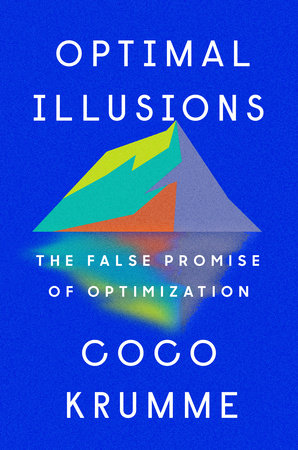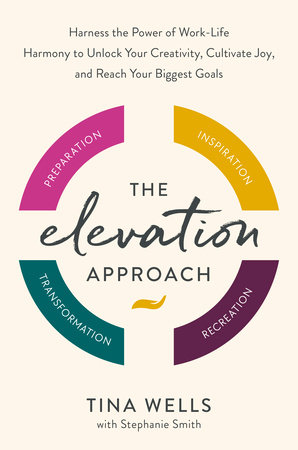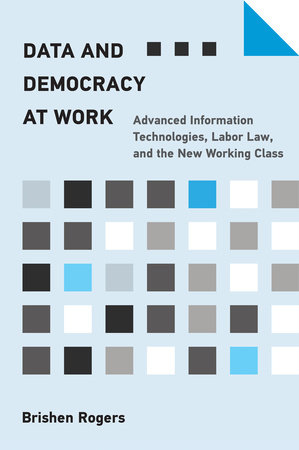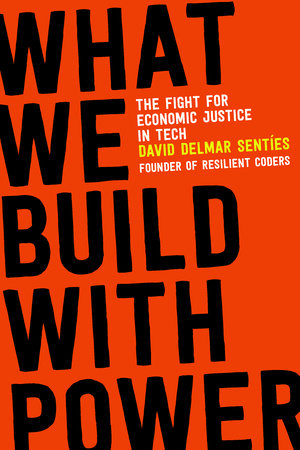Quick Summary
One Sentence Summary
“Antifragile” by Nassim Nicholas Taleb explores the concept of antifragility, a property that allows systems to thrive and grow when exposed to volatility, randomness, and disorder.
Big Idea
The central theme is the distinction between what is fragile, robust, and antifragile, emphasizing the importance of building systems, whether personal, financial, or societal, that not only resist shocks but also benefit from them.
Five Key Ideas
- Definition of Antifragility: Explaining how antifragility differs from resilience and robustness, focusing on its ability to improve under stress.
- Via Negativa: The concept of improvement by subtraction, not addition—focusing on what to remove from a system rather than what to add.
- The Barbell Strategy: A risk management strategy that involves safe and risky extremes, avoiding the middle ground.
- Skin in the Game: The importance of having a personal stake and accountability in the decisions one makes.
- The Black Swan: The impact of rare and unpredictable events and how antifragile systems can not only withstand them but also capitalize on them.
Actionable Advice
- Embrace randomness and uncertainty in your personal and professional life, using them as opportunities for growth.
- Apply the principle of via negativa: Instead of constantly adding new things, look for what you can remove to improve your life or work.
- Consider the barbell strategy in investments and decision-making, balancing extreme safety with calculated high-risk ventures.
About the Author
Nassim Nicholas Taleb is a Lebanese-American essayist, scholar, statistician, and former trader and risk analyst. He is known for his works on risk and probability, including other notable books such as “The Black Swan” and “Fooled by Randomness”.
Read Next
For those intrigued by the ideas in “Antifragile,” consider exploring:
- “The Black Swan” by Nassim Nicholas Taleb for deeper insights into the impact of rare and unpredictable events.
- “Fooled by Randomness” by Nassim Nicholas Taleb for a look into the hidden role of chance in life and the markets.
- “Thinking, Fast and Slow” by Daniel Kahneman for a broader understanding of decision-making and cognitive biases.
In Depth
Definition of Antifragility
Antifragility goes beyond resilience or robustness. The resilient resists shocks and stays the same; the antifragile gets better.
This idea is pivotal in “Antifragile.” Taleb defines antifragility as the capacity of a system to not only withstand chaos but to also thrive and improve from it. Unlike something that’s merely robust, which endures stress without changing, an antifragile entity gains from disorder. It’s a concept that challenges our usual avoidance of volatility.
Taleb uses the example of the mythical Hydra, a creature that grows two heads every time one is cut off. This creature is not just robust (surviving the attacks) but antifragile (becoming stronger with each blow). It’s a vivid metaphor. In real life, antifragility can be seen in systems where stressors lead to improvements, like muscles that grow stronger with exercise.
“The fragile wants tranquility, the antifragile grows from disorder, and the robust doesn’t care too much.” – Nassim Nicholas Taleb, Antifragile
He extends this concept to various fields. In economics, an antifragile market would be one that benefits from unpredictable events, becoming more robust with each crisis. In personal development, an antifragile mindset means viewing challenges as opportunities for growth rather than threats.
One detailed example from the book relates to the restaurant industry. Taleb notes that while an individual restaurant is fragile (prone to failure from various shocks), the restaurant industry as a whole is antifragile. It thrives on the trial and error of individual entities. When one restaurant fails, it provides valuable information to others, leading to a stronger, more adaptable industry overall.
This concept is not just theoretical; it has practical applications. Taleb urges individuals and institutions to structure themselves in a way that not only withstands chaos but benefits from it. This means embracing variability, taking calculated risks, and always seeking improvement from challenges.
Antifragility is about thriving in uncertainty. It’s a powerful lens through which to view the world, encouraging resilience and adaptability in the face of the unpredictable nature of life.
Via Negativa
Less is often more.
“Via Negativa” is Taleb’s principle of improvement through subtraction, not addition. It’s about recognizing the power of removing things to make systems stronger and more efficient.
Taleb explains that in many situations, adding new elements can introduce complexities and unintended consequences. Instead, by removing what is unnecessary or harmful, we can often achieve better results. This approach applies to various aspects of life, from personal habits to business strategies.
A detailed example from the book is related to health and medicine. Taleb argues that the human body is often better off with less intervention. He criticizes the overuse of medications for minor ailments, suggesting that this can lead to unforeseen side effects and complications. Instead, he advocates for a minimalistic approach, where interventions are only used when absolutely necessary, allowing the body’s natural antifragility to work.
“The first principle is that you must not fool yourself — and you are the easiest person to fool.” – Nassim Nicholas Taleb, Antifragile
This quote encapsulates the essence of via negativa. We often believe that doing more or adding more will lead to better outcomes. However, we can easily deceive ourselves. Sometimes, the best course of action is to do less, to remove rather than add.
In a business context, this could mean simplifying processes, reducing unnecessary meetings, or cutting down on bureaucratic procedures. By eliminating what’s not essential, organizations can become more agile and responsive.
Via Negativa challenges the common inclination towards complexity. It’s a call to embrace simplicity and recognize the power of omission. By focusing on what to remove, we can often find clearer paths to improvement and resilience.
The Barbell Strategy
Balance safety and risk.
“The Barbell Strategy” is a risk management approach Taleb advocates in “Antifragile.” It involves splitting resources between two extremes: high safety and high risk, while avoiding the middle ground. This strategy aims to limit potential losses while maintaining significant upside potential.
Taleb uses the example of financial investment to illustrate this concept. He suggests that one should invest a majority of their assets in extremely safe instruments, like treasury bonds, and a small but significant portion in high-risk, high-reward opportunities. This way, even if the risky investments fail, the majority of the portfolio remains secure. However, if the high-risk bets pay off, the returns can be substantial.
“Don’t cross a river if it is four feet deep on average.” – Nassim Nicholas Taleb, Antifragile
This quote reflects the core idea behind the Barbell Strategy. It warns against taking seemingly moderate risks that can lead to severe consequences. The river may be shallow on average, but stepping into a deep spot can be disastrous. Similarly, in life and investments, avoiding the deceptively risky middle ground can prevent catastrophic losses.
Applying this strategy beyond finance, Taleb suggests a similar approach in personal and professional decisions. For instance, in a career, this might mean having a stable job while experimenting with innovative side projects. The stable job provides security, while the side projects offer the potential for significant success without risking one’s primary source of income.
The Barbell Strategy is about balancing caution with daring. It’s a framework for navigating uncertainty, allowing for exposure to positive black swans (unexpected events with positive outcomes) while protecting against negative ones. It’s a method to harness antifragility, benefiting from volatility without being overwhelmed by it.
Skin in the Game
Accountability matters.
“Skin in the Game” is a concept Taleb emphasizes in “Antifragile,” advocating for the necessity of personal stake and accountability in decision-making. It’s about having something to lose, ensuring that individuals and institutions bear the consequences of their actions.
Taleb argues that many problems in society arise when decision-makers can impose risks on others without facing repercussions themselves. This disconnect leads to fragile systems where those making decisions aren’t sufficiently incentivized to ensure positive outcomes.
A detailed example from the book involves the banking industry, particularly during the 2008 financial crisis. Taleb criticizes bankers and executives who took excessive risks, leading to catastrophic consequences. However, many of these individuals faced little personal consequence; instead, the broader society bore the brunt of their actions. Had these bankers had more ‘skin in the game,’ meaning their personal fortunes and reputations were at stake, they might have made more prudent decisions.
“You will never fully convince someone that he is wrong; only reality can.” – Nassim Nicholas Taleb, Antifragile
This quote illustrates the importance of tangible consequences. Without personal stakes, people can remain detached from the outcomes of their decisions. Real-life repercussions, on the other hand, provide powerful lessons and motivations for responsible behavior.
Skin in the game extends beyond finance. In healthcare, it means doctors should recommend treatments they would opt for themselves. In politics, it suggests leaders should be affected by the policies they enact. In business, it calls for leaders to share in the risks and rewards faced by their companies.
Skin in the game is a principle for building antifragile systems. It aligns incentives, fosters responsibility, and ensures that those making decisions are invested in the outcomes. It’s about fairness and the ethical distribution of risks and rewards.
The Black Swan
Expect the unexpected.
“The Black Swan” is a concept deeply intertwined with Taleb’s idea of antifragility. It refers to rare, unpredictable events that have a massive impact. In “Antifragile,” Taleb explores how antifragile systems can not only withstand such events but also capitalize on them.
Taleb argues that most systems are designed assuming a predictable, stable world. However, history is often shaped by unforeseen events, or Black Swans. These can be negative, like financial crashes, or positive, like technological breakthroughs. Antifragile systems, according to Taleb, are those that can benefit from this unpredictability.
A detailed example from the book is the dot-com bubble burst in the early 2000s. Many companies were wiped out, but the event also paved the way for survivors and new entrants to innovate and dominate the tech landscape. Companies that were antifragile not only survived the crisis but emerged stronger, adapting to and capitalizing on the new reality.
“The problem with experts is that they do not know what they do not know.” – Nassim Nicholas Taleb, Antifragile
This quote underlines the limitation of predictions in the face of Black Swan events. Experts often fail to foresee these occurrences because they fall outside the realm of regular expectations. Antifragility, therefore, isn’t about predicting the unpredictable but rather building systems that adapt and thrive amid unforeseen circumstances.
Embracing the Black Swan concept means acknowledging the limits of prediction and focusing instead on building resilience and adaptability. It’s about positioning oneself or one’s organization to not just survive shocks, but to potentially gain from them.
The Black Swan teaches the importance of being prepared for the unexpected. It encourages a mindset that looks beyond the ordinary, anticipates disruption, and finds opportunity in uncertainty. It’s a call to embrace the unknown and make the most out of it.
Actionable Advice
- Embrace Small Risks: Regularly expose yourself to minor stressors. Like muscles that grow with exercise, this builds resilience.
- Practice Via Negativa: Simplify life. Remove rather than add. Declutter your schedule, habits, and possessions.
- Apply the Barbell Strategy: In finance and life decisions, balance extreme safety with calculated high risks. Avoid the deceptive middle ground.
- Have Skin in the Game: Ensure personal accountability in your decisions. Bear the consequences and rewards of your actions.
- Prepare for Black Swans: Acknowledge the unpredictability of life. Instead of trying to predict the future, build flexibility and adaptability.
- Learn from Failure: View setbacks as learning opportunities. Every failure is a chance to strengthen your antifragility.
- Value Diversity: In thoughts, investments, and experiences. Diverse inputs make you more adaptable to change.
- Seek Constructive Feedback: Regularly ask for honest input, even if it’s uncomfortable. It’s essential for growth and improvement.
- Embrace Uncertainty: Instead of fearing the unknown, see it as a space for opportunity and growth.
- Stay Curious: Constantly explore, learn, and question. A curious mind is naturally antifragile.
About the Author
Nassim Nicholas Taleb, born in 1960 in Lebanon, is a multi-faceted thinker. He’s a statistician, former trader, and risk analyst. Taleb’s education includes an MBA from the University of Pennsylvania and a Ph.D. in Management from the University of Paris. He’s renowned for his work on probability, uncertainty, and randomness. Taleb’s books, notably “The Black Swan” and “Antifragile,” challenge conventional wisdom about risk management and predictability. He advocates for systems that benefit from disorder, a concept central to his writings. Taleb’s philosophy stresses the limitations of human knowledge and the virtues of adaptability. He’s a critic of overreliance on models in finance and economics, arguing for more skin in the game and ethical responsibility. His thought-provoking ideas and straightforward style have earned him a wide readership and influence across various fields. Taleb currently serves as a Distinguished Professor of Risk Engineering at New York University’s Tandon School of Engineering. His work continues to inspire discussions on resilience, unpredictability, and how to thrive in a complex world.
Read These Next
You might like these similar books
- “Thinking, Fast and Slow” by Daniel Kahneman
- “The Black Swan: The Impact of the Highly Improbable” by Nassim Nicholas Taleb
- “Fooled by Randomness: The Hidden Role of Chance in Life and in the Markets” by Nassim Nicholas Taleb
- “Skin in the Game: Hidden Asymmetries in Daily Life” by Nassim Nicholas Taleb
- “The Signal and the Noise: Why So Many Predictions Fail – but Some Don’t” by Nate Silver
FAQ
Q: What is the main idea of “Antifragile” by Nassim Nicholas Taleb?
A: The main idea is that some systems benefit from shocks and volatility, becoming stronger and more resilient. This is the concept of antifragility.
Q: Who should read “Antifragile”?
A: Anyone interested in understanding how to thrive in uncertain environments, including professionals in finance, business, risk management, and individuals seeking personal growth.
Q: Does “Antifragile” require a background in finance or economics to understand?
A: No, it’s written in accessible language and provides insights valuable to a broad audience, regardless of their background.
Q: How does “Antifragile” relate to Taleb’s other books?
A: It builds on ideas from “The Black Swan” and “Fooled by Randomness,” further exploring unpredictability and resilience.
Q: Can the principles in “Antifragile” be applied in everyday life?
A: Yes, the book offers practical advice on building resilience and making better decisions in personal and professional contexts.







